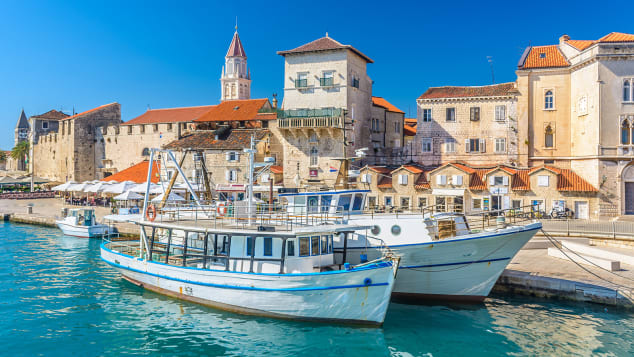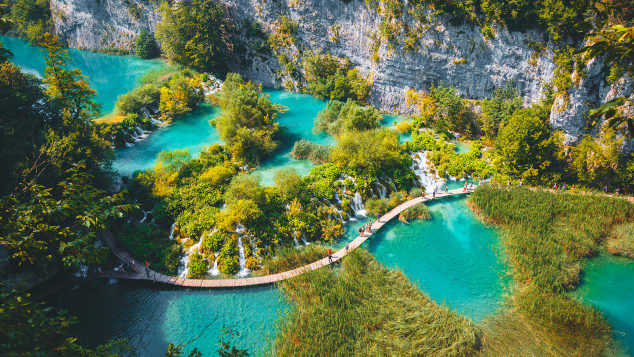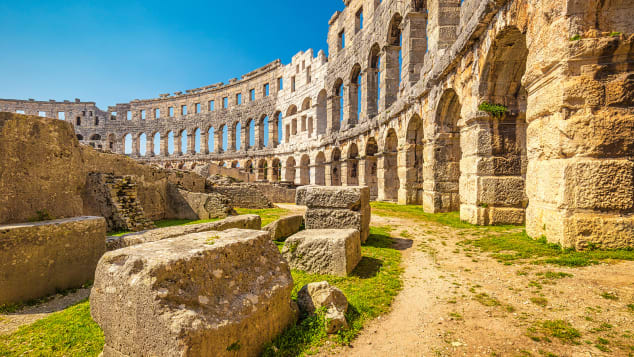Like Venice, Barcelona and Prague, Dubrovnik is a victim of its own success.
In 2019, more than three million tourists poured into the fabled walled town along Croatia’s Dalmatian Coast and local authorities expect the number to reach that point again over the next few years as global tourism recovers from Covid-19.
Such were the pre-pandemic crowds and their impact on the historic city that UNESCO at one point threatened to revoke Dubrovnik’s World Heritage status.
The rise in visitation was largely fueled by the launch of a new cruise ship terminal that could handle five ships at once and disembark as many as 10,000 passengers per day and an expanded international airport that could funnel those passengers to and from their boats.
As if that wasn’t enough, along came a global hit television show that lured a whole new breed of tourist.
“Before ‘Game of Thrones,’ most of the people I guided were interested in art and architecture, that sort of thing,” says veteran Dubrovnik guide Ivan Vukovic. “But then more and more people just wanted selfies at places where they made the show — like Pile Gate and Fort Lovrijenac.
“And we had a big, big problem with naked Instagramers doing their own ‘walk of shame’ on the Jesuit Stairs.”
That doesn’t mean you shouldn’t visit Dubrovnik — it remains one of the coolest urban spaces on planet Earth. But for those who like their history, art and architecture with far fewer people, these seven alternative Croatian coastal towns deliver a similar vibe with far fewer people.
Ston
Just an hour’s drive up the coast from Dubrovnik, Ston is one of Dalmatia’s best-kept secrets. Founded by the ancient Illyrians, the laidback seaside village is renowned for its stone walls and incredible seafood.
Like a Croatian version of the Great Wall of China, the 14th-century battlements crawl up and over a mountain behind the village. It takes a few hours to trek Europe’s longest fortified structure (3.5-miles/5.5-km), even less to run the ramparts during the annual Ston Walls Marathon.
A vehicle-free pedestrian street in Ston’s old town is filled with outdoor cafes like Konoba Bakus that serve seafood specialties like Adriatic oysters, black cuttlefish risotto and mussels buzara. Feel free to linger all afternoon; the locals do.
Trogir

Half an hour up the coast from Split, this tiny island city is like a miniature Dubrovnik, shaped by nearly four centuries of Venetian rule and thoroughly unspoiled. Surrounded by water, Trogir feels more like Venice than any other outpost along the Dalmatian Coast.
When Trogir was named a UNESCO World Heritage Site in 1997, the citation described the city as “an excellent example of a medieval town… that has conserved its urban fabric to an exceptional degree and with the minimum of modern interventions … in every aspect of the townscape.”
Even if you’re not into quaint cobblestone streets and palm-lined waterfront promenades, the Cathedral of St. Lawrence — with its iconic Venetian-style belltower and extravagant Radovan’s Portal — should put Trogir on your Dalmatian bucket list.
Primošten
Renowned for its summertime folk festival and donkey races, Primošten is almost another ancient island town. During the Renaissance, residents constructed a narrow causeway that connects their insular home to the mainland.
The town’s narrow lanes harbor handicraft shops, one-off clothing boutiques and traditional konoba restaurants. Rising high above their red-tiled roofs, St. George’s Church dominates a hilltop with awesome Adriatic views.
Across the causeway are sandy Mala Raduča and other beaches and a hinterland filled with vineyards that produce some of Croatia’s finest wines.
Biograd na Moru
Sprawling across a small peninsula, Biograd boasts yet another medieval old town heavily influenced by centuries of Venetian rule. But its real strength is Adriatic access.
As one of the nautical hubs of the Dalmatian coast, Biograd offers numerous ways to get out on the water. Scuba and snorkel day trips depart daily for Kornati National Park and its myriad unspoiled islands.
Back in town, Marina Šangulin is homebase to several yacht charter firms offering a variety of motor- and canvas-powered vessels. You can also rent paddleboards and flit between the scenic coves south of the old town.
Zadar

Lodged between a photogenic yacht-filled harbor and the island-spangled Adriatic, Zadar’s old town offers a setting every bit as magical as Dubrovnik.
From a ruined Roman forum and Romanesque churches to its sturdy Venetian walls and an occasional communist-era structure that almost looks vintage, the old town’s architecture is a mashup of the various people who have ruled Zadar over the years.
Alfred Hitchcock once remarked that Zadar had the most beautiful sunset he’d ever seen. And there is something special about the city at dusk as lights twinkle around the harbor, the waterfront sea organ plays a wave-generated tune, and the old town’s cafes and bars spring to life.
Beyond its own attractions, Zadar is a great base for visiting medieval Nin (Croatia’s first royal capital), bungee jumping off towering Maslenički Bridge, or hiking and rock climbing in Paklenica Gorge. And it’s just a two-hour drive from the turquoise pools and copious waterfalls of Plitvice Lakes National Park.
Split
Encircled by factories and sprawling suburbs, Split isn’t the most attractive Dalmatian destination. Yet Croatia’s second largest city offers plenty to ponder.
The city’s pride and joy is Diocletian’s Palace, erected in the 4th century AD by a paranoid Roman emperor who was certain he would be assassinated if he didn’t relocate from the imperial capital and surrounded himself by impregnable walls.
A UNESCO World Heritage Site all on its own, the palace is like a small city. Even today, more than 3,000 people live inside its massive outer walls. Don’t miss the massive cellars, especially the gritty interface with portions that have yet to be excavated — a cross section of residential trash deposited over 1,700 years.
Split’s waterfront bustles with ferries bound for popular Adriatic islands like Brač, Hvar and outlandishly handsome Vis, where “Mamma Mia! Here We Go Again” was filmed on location (rather than real-life Greece).
Located in a park-like setting on the city’s outskirts, the ancient Roman city of Salona preserves a large amphitheater, baths, basilica and many other structures. Looming on a nearby mountaintop is Klis Fortress, an imposing medieval castle once occupied by the Knights Templar and the mythical city of Meereen in Game of Thrones.

One of the northernmost cities of the Croatian coast, Pula lies along the western edge of the Istrian Peninsula not far from Venice. A star-shaped Renaissance castle crowns the old town. But Pula’s claim to fame is Roman relics.
Nearly 2,000 years after it was built, Pula Arena remains one of the world’s best-preserved Roman structures. Nowadays the colossal stadium provides a venue for plays, concerts and the annual outdoor Pula Film Festival.
Fast forwarding to the communist era, the intriguing Memo Museum Pula offers a stroll down memory lane to everyday life in Tito’s Yugoslavia, of which Croatia was once a part. Pula is also the gateway to the islands of Brijuni National Park with its beaches, hiking trails, golf course and safari park.
Dubrovnik
If you can’t resist the lure of Dubrovnik, a few things can make your visit easier.
While staying at a short-term rental or small hotel inside the city walls may seem like the ultimate in romance (and it is), this often involves schlepping your bags up hundreds of stone stairs. Meanwhile, those with rental cars will discover that the most convenient parking runs to around US$100 per day.
The alternative is staying just outside the walls at a rental or hotel (like the Hilton Imperial) that offers free parking. Or just don’t have a vehicle; local bus services are fast, frequent and efficient, as are taxis and ride shares. At less than US$1 per kilometer, Uber rates to the old town run around US$8 from the cruise port and US$27 from the international airport.
Given the mild Mediterranean climate of the Dalmatian coast, you don’t need many clothes. So keep your luggage to a minimum, especially if you’re staying inside the walls.
Avoid the heaviest crowds by exploring the old town before and after the daily high tide of cruise ship passengers. Walking the polished limestone streets is especially pleasant at dawn or late evening.
Hire a guide for a walking tour. Not just for local history and architecture, but also for the lowdown on how Dubrovnik weathered the civil war that followed the breakup of Yugoslavia in the 1990s and what life is like today for those while still live inside the walls.
Source: CNN

